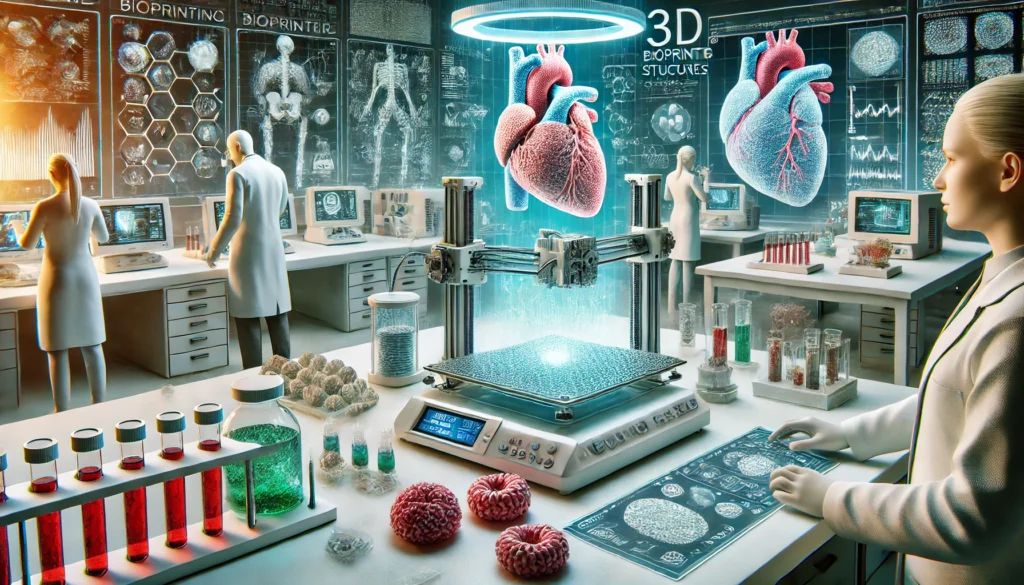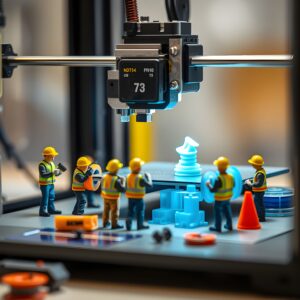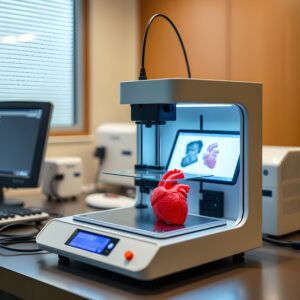3D Printing in Healthcare: From Prosthetics to Bioprinting

Delve into how 3D printing is revolutionizing healthcare, from creating custom prosthetics to pioneering bioprinting techniques for organ transplants.
3D printing is rapidly transforming the healthcare industry, offering unprecedented possibilities for personalized medicine, surgical planning, and even organ transplantation. The advancements made in August 2024 highlight the growing impact of 3D printing on healthcare, as new techniques and applications continue to emerge. From custom prosthetics that improve patients’ quality of life to cutting-edge bioprinting technology that holds the promise of creating functional human tissues, 3D printing is reshaping the future of medical care.
Custom Prosthetics and Implants
One of the most significant applications of 3D printing in healthcare is the creation of custom prosthetics and implants. Traditional methods of manufacturing prosthetics often involve long lead times, high costs, and limited customization options. In contrast, 3D printing allows for the rapid production of highly personalized prosthetics that are tailored to the exact specifications of the patient. This ensures a better fit, improved functionality, and greater comfort, leading to a higher quality of life for the patient.
In August 2024, several healthcare providers showcased new advancements in 3D printed prosthetics, including the use of lightweight, durable materials and sophisticated design techniques that mimic the natural movement of human limbs. These innovations are particularly beneficial for children, who require prosthetics that can be easily adjusted as they grow. The ability to quickly and affordably produce custom prosthetics is revolutionizing care for patients with limb loss or congenital deformities, providing them with greater mobility and independence.
Surgical Planning and Patient-Specific Models
3D printing is also playing a critical role in surgical planning and education. Surgeons can now use 3D printed models of a patient’s anatomy to plan complex procedures with greater precision. These models, which are created from the patient’s own medical imaging data, allow surgeons to practice and refine their techniques before entering the operating room. This leads to more accurate surgeries, reduced operating times, and better outcomes for patients.
In August 2024, new developments in 3D printing technology enabled the creation of even more detailed and lifelike models, including those that mimic the texture and density of human tissues. These advancements are enhancing the ability of surgeons to anticipate challenges and tailor their approach to the unique needs of each patient. Additionally, 3D printed models are being used for patient education, helping individuals better understand their conditions and the procedures they will undergo.
Bioprinting and the Future of Organ Transplants
Perhaps the most groundbreaking application of 3D printing in healthcare is bioprinting—the process of creating living tissues using cells and biomaterials. While still in its early stages, bioprinting holds the potential to revolutionize organ transplantation by providing a solution to the chronic shortage of donor organs. In August 2024, researchers made significant strides in bioprinting technology, bringing us closer to the goal of printing functional human tissues and organs.
Current bioprinting efforts are focused on creating complex tissues, such as skin, cartilage, and even small sections of organs like the liver or kidney. These tissues can be used for drug testing, disease modeling, and eventually, for transplantation. The ability to print organs on demand would eliminate the need for donor organs and reduce the risks associated with organ rejection, as the printed organs would be made from the patient’s own cells.
While there are still many challenges to overcome, including the need to create vascular networks within printed tissues, the progress made in August 2024 demonstrates that bioprinting is a rapidly advancing field with immense potential. The future of organ transplants may very well be shaped by the continued development of 3D printing technology.
Advancements in Medical Devices and Tools
Beyond prosthetics and bioprinting, 3D printing is also being used to create customized medical devices and tools. From patient-specific surgical instruments to bespoke dental implants, 3D printing allows for the production of devices that are tailored to the individual needs of each patient. This customization leads to better patient outcomes, as well as increased efficiency in medical procedures.
In August 2024, several new 3D printed medical devices were introduced, including innovative drug delivery systems and wearable health monitors. These devices are designed to provide more targeted and effective treatments, improving patient care while reducing side effects and complications.
The Future of Healthcare with 3D Printing
As 3D printing technology continues to evolve, its impact on healthcare will only grow. The ability to create customized, patient-specific solutions is leading to more effective treatments and better patient outcomes. Additionally, the potential of bioprinting to revolutionize organ transplantation offers hope to millions of patients in need of life-saving procedures.
3D printing is transforming healthcare in profound ways, from the development of custom prosthetics to the pioneering of bioprinting techniques. The advancements seen in August 2024 underscore the technology’s growing importance in medicine, as it opens up new possibilities for personalized care and innovative treatments. As the field of 3D printing continues to advance, its role in healthcare will undoubtedly expand, leading to even greater innovations and improvements in patient care.



